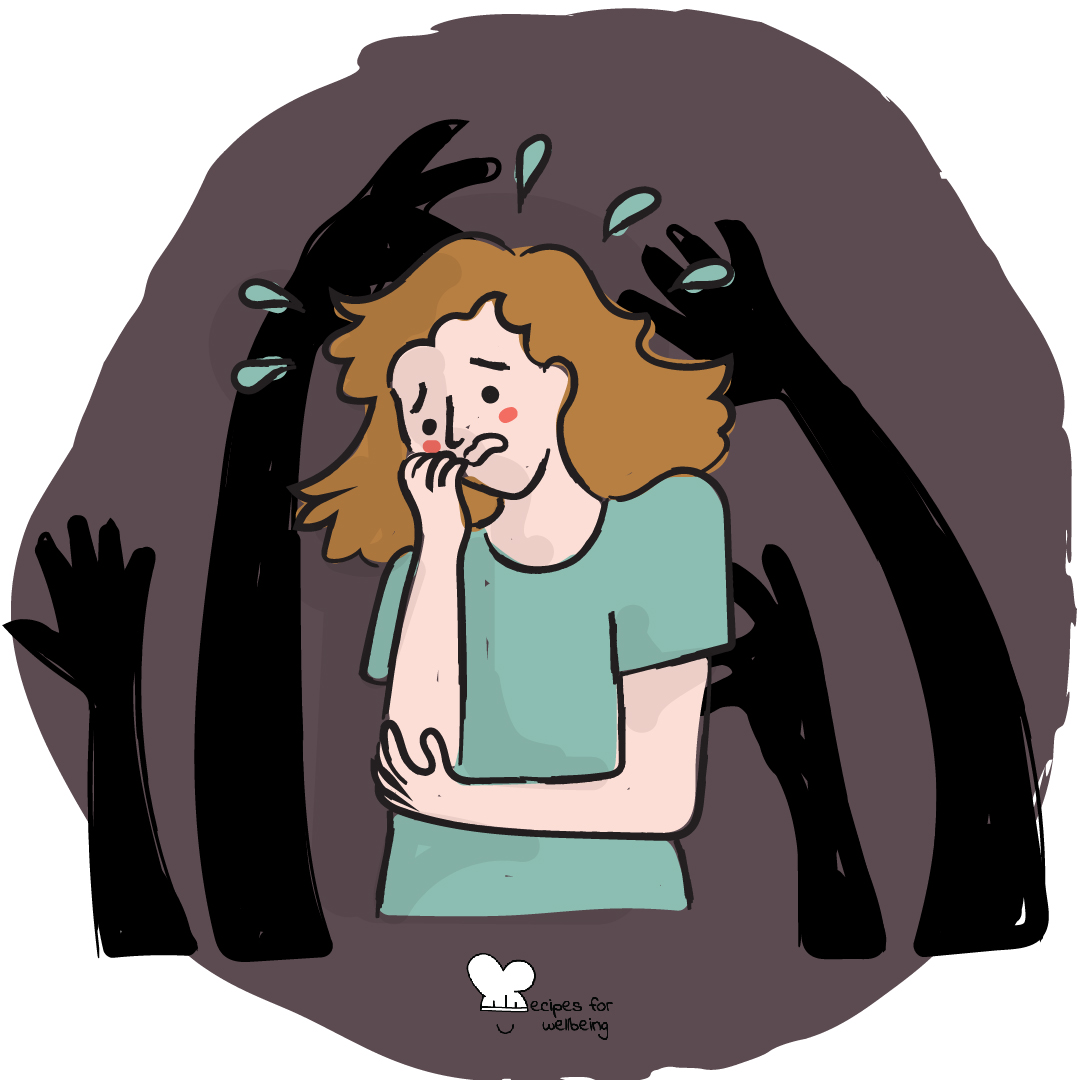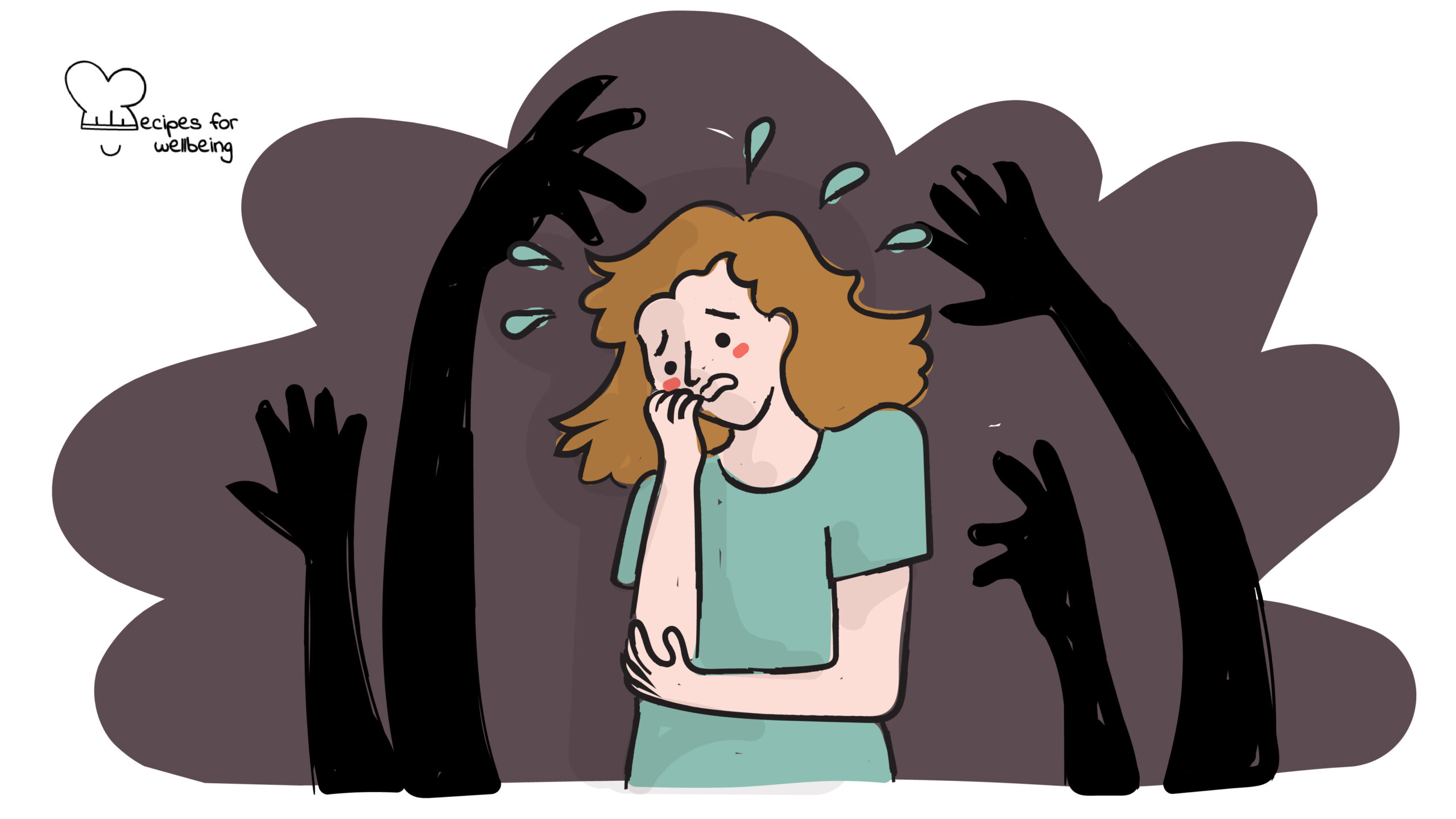
Coping with panic attacks
No need to hurry. No need to sparkle. No need to be anybody, but oneself. ―Virginia Woolf
👥 Serves: 1 person
🎚 Difficulty: Easy
⏳ Total time: 11-30 minutes
🥣 Ingredients: A quiet place with no distractions
🤓 Wholebeing Domains: Awareness, Discomfortability, Positive Emotion
💪 Wholebeing Skills: Acceptance, Breathing, Calm, Centring, Mind-body-connection, Reflection, Relief, Self-regulation, Stress management

Coping with panic attacks
📝 Description
A simple technique to cope with panic attacks.
A panic attack is a sudden and intense physical and psychological experience of extreme anxiety that manifests in symptoms such as feeling frightened, breathless and sweaty with a dry mouth, dizziness, disorientation, shaking, nausea and a rapid heart beat. Panic attacks distort your thinking as well as giving you physical symptoms, heightening negative thoughts (filtering out the good thoughts), provoking catastrophising, over-generalising or ‘all-or-nothing’ thinking (where things seem all good or all bad).
The first thing to remember if you are having a panic attack is that you are not in immediate danger. Nothing bad will happen to you during this time. It might seem as if you’re going to have a heart attack or that you can’t breathe, but this is not the case. It will pass. When our bodies are in a heightened state of anxiety, it can be very hard to think your way out of it, so the first thing we need to do is to help your body feel calmer and safer – slowing down your breathing and lowering the heart-rate. You can reduce your symptoms using this simple technique called EGO.
The following recipe has been kindly donated by Tamsin Embleton of the MITC – Music Industry Therapists and Coaches. This activity is part of a free 50-page Anxiety Relief & Self-Isolation guide that Tamsin has put together with help from Mike Exeter – producer of Black Sabbath, Judas Priest et al, Nutritionist Emmaline Rasmussen, breathwork coach Marcus Blacker, fitness expert Helen Buffet and various other coaches, therapists, and recovery specialists. If you would like to know more about Tamsin, please visit http://embletonpsychotherapy.com.
•••
Important: We shared this recipe as part of our blog post “Wellbeing for Ukraine” and you can access a translated version here (kindly translated by our changemaker friend Nadiia Mykhalevych).
👣 Steps
Step 1 – E = Exhale (5’)
E is for Exhale – bring your heart rate down by elongating your out-breath.
- Sit up straight and open out your shoulders, allowing you a greater capacity to breathe.
- Take a breath in and then elongate your out-breath.
- Repeat this for 3-5 minutes.
- You can listen to calming music, or follow a breathing app like iBreathe (choose the 4-7-8 breathing exercise, which will help you to bring your heart rate down and manage the anxious feelings and can also be effective for sleep difficulties).
- During the exercise, some people find it helpful to visualise breathing out chaos and breathing in courage.
Step 2 – G = Grounding (5’)
G is for Grounding – bring your attention to your body. Grounding is a way of bringing you back to the present moment. One way of doing that is by focusing on the sensations of the body.
- How do the points of contact with the floor or chair feel?
- Start with your toes and gradually move your attention up through your body to the top of your head.
- What sensations can you feel in each area of your body?
- Soften any areas holding tension (jaw, forehead, shoulders, tummy – wherever you feel it).
- Guided body scans, such as this one, can also be effective for active minds that need something to do.
Other grounding techniques include drinking a very cold glass of water or using your senses to bring you back to the present. More grounding techniques available from Healthline and Living Well.
Step 3 – O = Orientate (5’)
O is for Orientate – move your focus to where you are.
- Notice any sounds around you as you sit and re-centre.
- What can you see?
- Focus on an object in your surroundings and explore it; try to describe it as best you can. How might it feel, what texture does it have?
- How heavy is it?
- After that, stretch out any remaining tension.
Step 4 – Reflection
When you are feeling more yourself again you can reflect on what might have triggered the panic attack. The trigger may be a situation, a feeling, an object, or a person.

